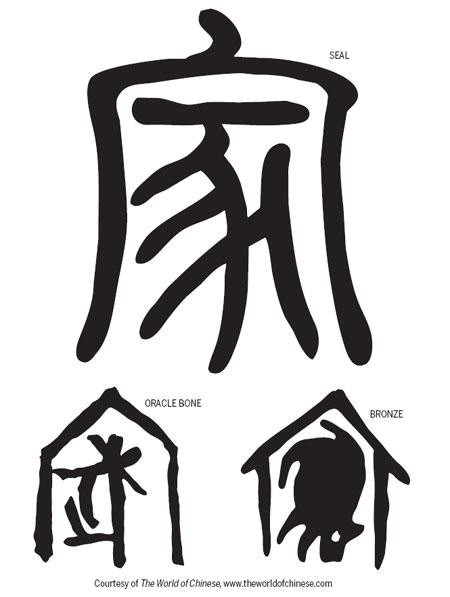This extract below came from a short chapter (entitled 家 jiā – Home) in Xiaolu Guo’s “A Lover’s Discourse” which I’m reading through at the moment. I’m not 100% convinced she’s correct but hey, it made me smile wryly…
The system she refers to – called hukou – has roots in taxation records that can be traced back to as early as the 21st century BCE and (pace Wiki) is the registration of an individual in the system (kou literally means “mouth”), which originates from the practise of regarding family members as “mouths to feed”, similar to the phrase “per head” in English.
Now we had a home for ourselves. A little roof under the sky. Misty. It belonged to you and me. A home, a jiā. I thought of a pig under the roof. The Chinese character 家 (jiā) consists of two radicals. One is 豕 – a symbol for pig. The other is 宀 – a symbol for roof.
‘Why is it that the character for home is a pig in a house rather than a person in a house?’ you asked.
‘Because in the old days, pigs were counted as people in the household registration,’ I explained. ‘A house with people in it doesn’t mean it is resourceful. But a house with a pig in it suggests that a family is self-sufficient and wealthy.’
You thought about what I said. Not entirely convinced, you asked: ‘But I often see they hang a pig’s head in Chinese restaurants or in a kitchen. It’s not the prettiest of pictures with flies all over its skin. Is that a symbol of a good kitchen?’
‘Why not? I don’t see the contradiction in this. It’s about how we can feed ourselves.’ Then I added: ‘Maybe your family never needed to worry about feeding itself?”
The poor always need pigs.
